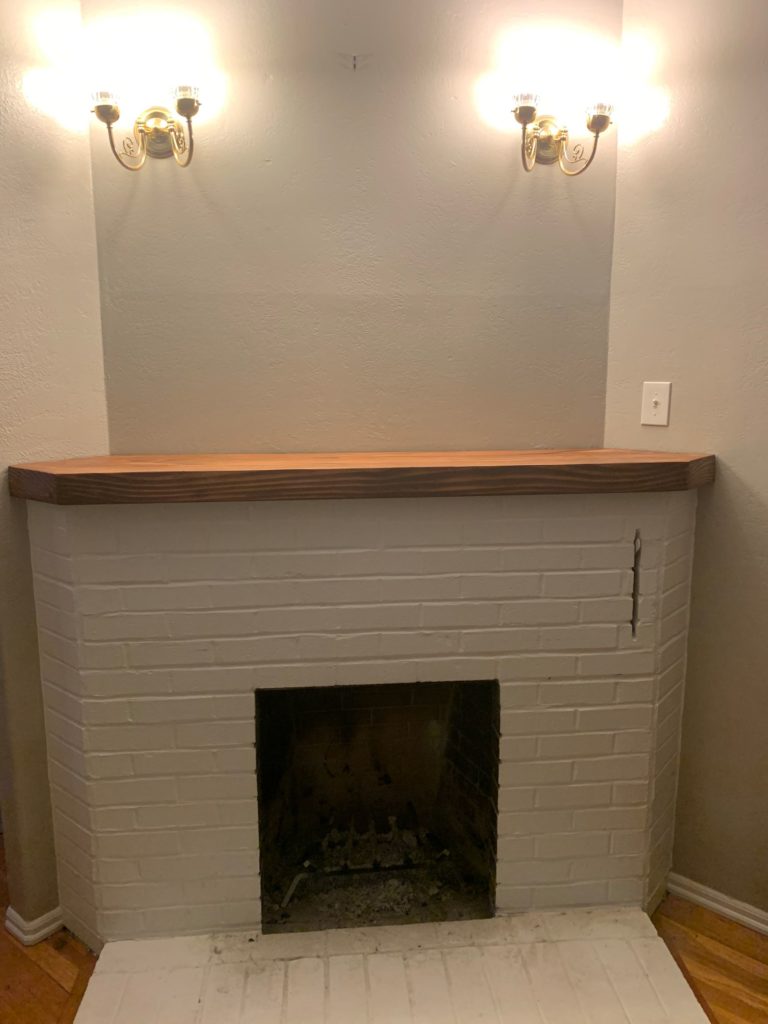I finished my mantel project on Sunday. I kind of fell off of keeping track of my hours and I definitely didn’t hit my target date. I suppose if you are keeping up with the theme, I didn’t really want to.

I had other things that I would rather do. I had bids that I needed to get out. I had interviews to attend, I had blogging I wanted to do. I had other things that I had to do like hanging light fixtures, moving furniture for new carpet and assembling new furniture.
As with all projects, I ran into some things that didn’t go exactly as I expected. I was going to use a special router bit to make the 45 degree miter stronger, but I found the setup to be way too fussy without a proper router table. I also found that the air dried fir was too brittle to precision route an touchy joint. Those kind of derailments made me pause for a new strategy and that kind of pause put the brakes on momentum of the project.
To be truthful, I am looking more forward to the table that I am going to build next. I built this one first to get it done because the next project is going to be significantly bigger. I will need to do some more planning to get a more accurate estimate of how long things are going to take. One thing for sure is that I am not going to have the kind of time that I had previously.
With the holidays approaching, there is always significantly less free time. I also took a seasonal job delivering for Amazon. I may be working four to six days a week doing that for now. I think it will allow time to keep looking for a replacement job and writing but there is only so much time in a day and week for doing projects.
This is a job that I wanted. Don’t get me wrong, it is my lowest, post college degree paying job by a long shot. But, it is a four ten hour shift a week, turn it off when you clock out kind of gig. It is going to bring in some money consistently and there are worse jobs for less money out there. Believe me, I have been looking.
I have always thought that I would be interested in a job driving. I can download my playlist, listen to my podcasts and get paid to do so. I will talk more about my experience later, but I am thinking that this could be fun for a while.
If you were to ask me what my favorite job was, I would tell you that it was when I was a student janitor my senior year in college. Many people could find the downside in being a janitor, but I actually liked it, a lot. Beside the obvious benefit of getting some spending money, it forced me to budget my time effectively because I worked every week night. The best part was getting away from my complicated cerebral calculus and high level science projects and spend three hours a day sweeping, mopping and doing event setup. I lost twenty pounds, stayed focused and got paid.
I am hoping that this job will be a motivator with some of the same side benefits. In the mean time, I still have some days to do my own business if I get any or work on projects.



Recent Comments